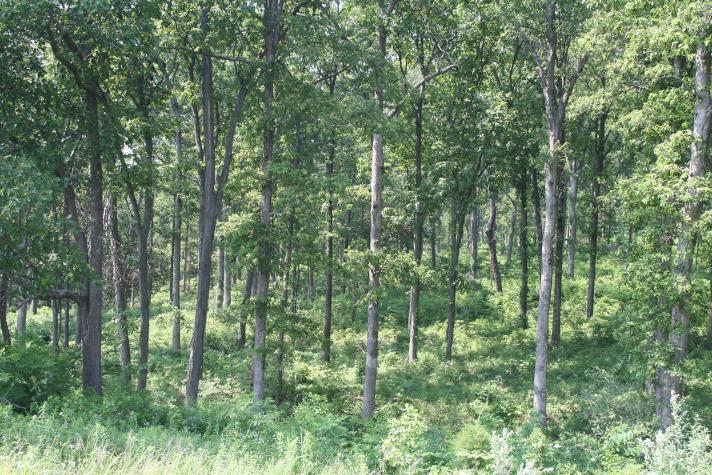COLUMBIA, Mo. – A new report from the University of Missouri School of Natural Resources outlines the critical role of forests in removing carbon dioxide from the atmosphere and storing it in plant material.
“Carbon and Biomass Dynamics in Missouri Forests and Implications for Climate Change” was prepared for the Missouri Forest Products Association with funding from the Missouri Department of Economic Development. It looks at the role forests play in removing atmospheric carbon dioxide, which has increased over the past century due to the burning of fossil fuels such as coal, petroleum and natural gas.
The report looks at how carbon is cycled through Missouri forests and suggests thinking about trees and forest products not just in traditional units of board feet and cubic feet but as units of carbon.
“Trees are genetically programmed to sequester and store carbon,” said University of Missouri Extension forestry state specialist, Hank Stelzer, a co-author of the report. “They take up CO2 from the atmosphere and, through photosynthesis, convert it into carbon-based molecules that become wood or other tree tissues.”
The report found wood products can play an important role in long-term carbon storage. Benefits include moving carbon stored in trees from the forest to products such as flooring and lumber while simultaneously increasing space in the forest for more trees to grow and store more carbon.
Also, carbon stored in the wood products saves on fossil fuels that would have been required to make alternative products such as cement, plastic and steel, which often require more energy for production.
The report highlights sustainable forest management as an example of a natural climate solution, using ecological processes for carbon sequestration and storage. Examples of these management practices include planting trees, thinning forest stands so they maintain high rates of carbon sequestration and harvesting mature stands to prevent dead and decaying trees from releasing their carbon back to the atmosphere.
“Active management of forest resources using sustainable practices offers a wide variety of benefits beyond carbon and wood products,” said co-author Ben Knapp, associate professor in the MU School of Natural Resources. Improved wildlife habitat, increased biodiversity and improved resiliency to a disturbance or changing climate are just a few examples cited by Knapp.
The report concludes by identifying practices that can increase forest carbon sequestration and offset carbon dioxide emissions. The authors point out that humans have the ultimate say if those practices are put into place.
“We have options to either help or hinder that process,” Stelzer said.
The report is available for free download at “Carbon and Biomass Dynamics in Missouri Forests and Implications for Climate Change.”
Photo
ForestForests play a critical role in removing carbon dioxide from the atmosphere. Photo by Hank Stelzer, University of Missouri Extension forestry state specialist.
Writer: Julie Harker
